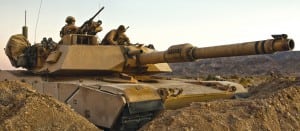
The Army has finished firing missiles at the first of several vehicles outfitted with active protection systems (APS) and is on track to make a decision on whether to purchase the technology for its combat vehicles in the fall.The first vehicle – an Abrams tank – has completed characterization of an onboard APS system at the Joint Maneuver Training Center at Camp Grayling, Mich, according to Maj. Gen. David Bassett, program executive officer for Ground Combat Systems (PEO GCS). Bassett…

 By
By 











